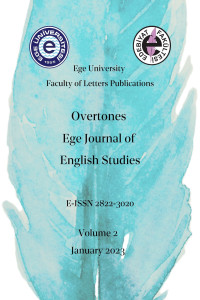Abstract
References
- Chadwick, Joseph. “A Blessing and a Curse: The Poetics of Privacy in Tennyson’s ‘The Lady of Shalott.’” Victorian Poetry, vol. 24, no. 1, 1986, pp. 13–30. JSTOR, http://www.jstor.org/stable/40002181. Accessed 28 Jul. 2022.
- Giddens, Anthony, and David Held, editors. Classes, Power, and Conflict: Classical and Contemporary Debates. Macmillan, 1982.
- Marx, Karl, and Friedrich Engels. Economic and Philosophic Manuscripts of 1844 / and the Communist Manifesto. Translated by Martin Milligan, Prometheus Books, 1988.
- Marx, Karl, and Friedrich Engels. The German Ideology: Including Theses on Feuerbach and Introduction to the Critique of Political Economy. Prometheus Books, 1998.
- Marx, Karl. A Contribution to the Critique of Political Economy. Translated by Nahum Isaac Stone, The International Library Publishing Co, 1904.
- Marx, Karl. Capital: A Critique of Political Economy. Translated by Ben Fowkes, Penguin, 1992.
- Marx, Karl. Wage-Labour and Capital ; &, Value, Price, and Profit. International Publishers, 1995.
- Plasa, Carl. “‘Cracked from Side to Side’: Sexual Politics in ‘The Lady of Shalott.’” Victorian Poetry, vol. 30, no. 3/4, 1992, pp. 247–63. JSTOR, http://www.jstor.org/stable/40002467. Accessed 1 Aug. 2022.
- Shannon, Edgar F. “Poetry as Vision: Sight and Insight in ‘The Lady of Shalott.’” Victorian Poetry, vol. 19, no. 3, 1981, pp. 207–23. JSTOR, http://www.jstor.org/stable/40002004. Accessed 12 Aug. 2022.
- Shelley, Percy Bysshe. “To a Sky-Lark.” Shelley’s Poetry & Prose: Authoritative Texts and Criticism, edited by Donald H. Reiman and Sharon B. Powers, Norton, New York, 1977, pp. 226–229.
- Tennyson, Alfred, and Alfred Tennyson. “The Lady of Shalott.” Tennyson: A Selected Edition, edited by Christopher Ricks, Routledge, Abingdon, 2014, pp. 20–27.
Abstract
“The Lady of Shalott,” written by Lord Tennyson, tells the story of a lady cursed to work in her tower, leaving which would, and eventually does, cause her death. However, characterisations and imageries present in the poem also evoke more social implications, implications which would be contemporary of Tennyson despite the poem’s setting. Accordingly, this paper argues that Lord Tennyson, in his “The Lady of Shalott,” provides a metaphor for the class relations that exist under capitalism. By drawing from the Marxian understanding of society and societal relations, the study explicates how this poem can also be understood as a “mirror” of the Victorian society. In this sense, the Lady comes to metaphorise the working class, Shalott the socio-material conditions of the working class, Lancelot the bourgeoisie, Camelot the socio-material conditions of the bourgeoisie. It is also important to note that this study does not argue that Lord Tennyson was even aware of any Marxist idea, rather, his understanding of societal relations coincided with that of Marxism.
References
- Chadwick, Joseph. “A Blessing and a Curse: The Poetics of Privacy in Tennyson’s ‘The Lady of Shalott.’” Victorian Poetry, vol. 24, no. 1, 1986, pp. 13–30. JSTOR, http://www.jstor.org/stable/40002181. Accessed 28 Jul. 2022.
- Giddens, Anthony, and David Held, editors. Classes, Power, and Conflict: Classical and Contemporary Debates. Macmillan, 1982.
- Marx, Karl, and Friedrich Engels. Economic and Philosophic Manuscripts of 1844 / and the Communist Manifesto. Translated by Martin Milligan, Prometheus Books, 1988.
- Marx, Karl, and Friedrich Engels. The German Ideology: Including Theses on Feuerbach and Introduction to the Critique of Political Economy. Prometheus Books, 1998.
- Marx, Karl. A Contribution to the Critique of Political Economy. Translated by Nahum Isaac Stone, The International Library Publishing Co, 1904.
- Marx, Karl. Capital: A Critique of Political Economy. Translated by Ben Fowkes, Penguin, 1992.
- Marx, Karl. Wage-Labour and Capital ; &, Value, Price, and Profit. International Publishers, 1995.
- Plasa, Carl. “‘Cracked from Side to Side’: Sexual Politics in ‘The Lady of Shalott.’” Victorian Poetry, vol. 30, no. 3/4, 1992, pp. 247–63. JSTOR, http://www.jstor.org/stable/40002467. Accessed 1 Aug. 2022.
- Shannon, Edgar F. “Poetry as Vision: Sight and Insight in ‘The Lady of Shalott.’” Victorian Poetry, vol. 19, no. 3, 1981, pp. 207–23. JSTOR, http://www.jstor.org/stable/40002004. Accessed 12 Aug. 2022.
- Shelley, Percy Bysshe. “To a Sky-Lark.” Shelley’s Poetry & Prose: Authoritative Texts and Criticism, edited by Donald H. Reiman and Sharon B. Powers, Norton, New York, 1977, pp. 226–229.
- Tennyson, Alfred, and Alfred Tennyson. “The Lady of Shalott.” Tennyson: A Selected Edition, edited by Christopher Ricks, Routledge, Abingdon, 2014, pp. 20–27.
Details
| Primary Language | English |
|---|---|
| Subjects | British and Irish Language, Literature and Culture |
| Journal Section | Research Articles |
| Authors | |
| Publication Date | January 23, 2023 |
| Submission Date | September 20, 2022 |
| Published in Issue | Year 2023 Issue: 2 |


